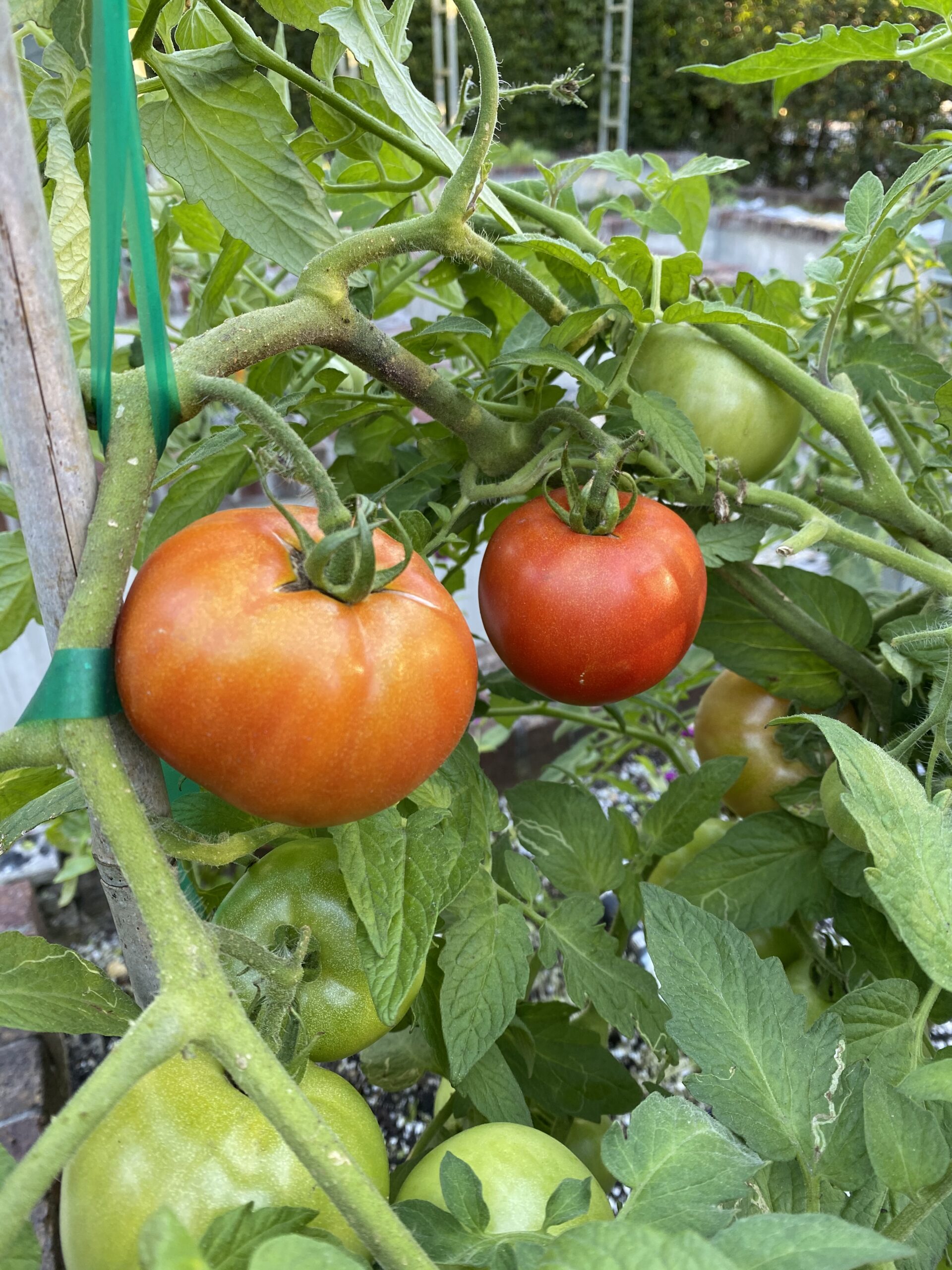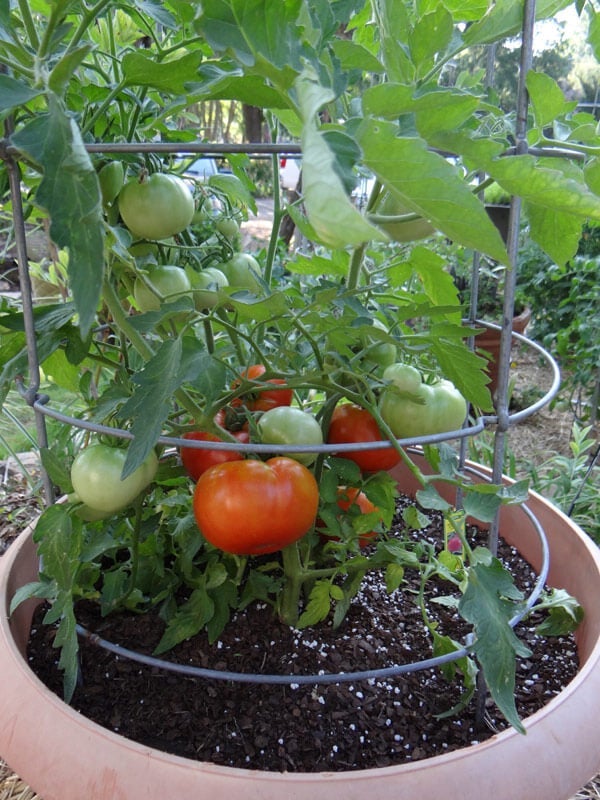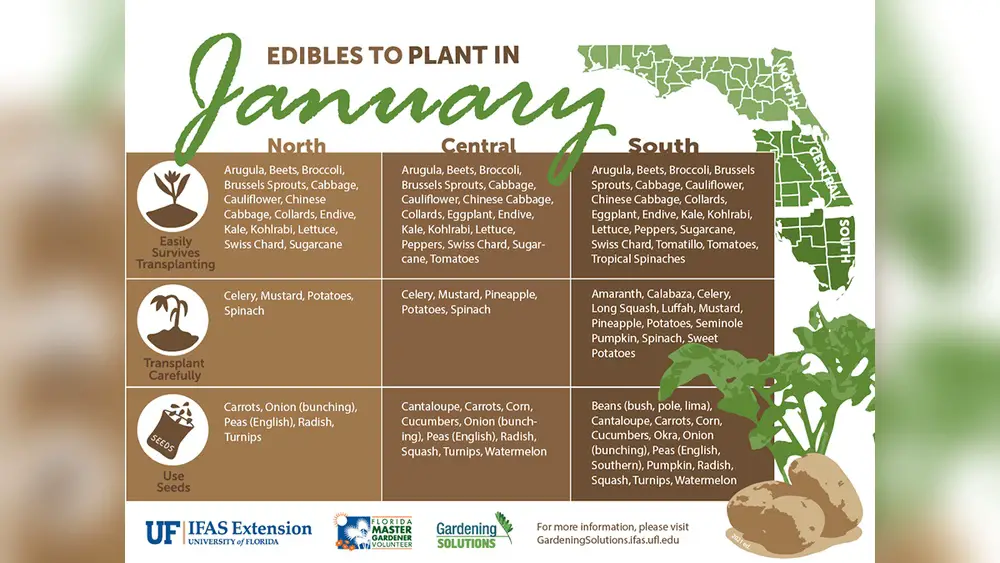If you’ve ever dreamed of biting into a juicy, homegrown tomato, knowing the best time to plant tomatoes in Florida is your first step to success. Florida’s unique climate means timing your planting just right can make all the difference between a bountiful harvest and wilted plants.
Whether you live in North, Central, or South Florida, understanding when to sow your tomato seeds will help you avoid the summer heat and pesky diseases that slow growth. Ready to discover the perfect planting window that will fill your garden with ripe, flavorful tomatoes?
Keep reading to unlock expert tips tailored just for your Florida garden!

Credit: www.soflagardening.com
Tomato Planting Seasons In Florida
Tomato planting seasons in Florida vary by region and climate. The state’s warm weather allows two main growing windows. Choosing the right time boosts tomato growth and fruit quality. Understanding these seasons helps gardeners plan better and avoid common planting mistakes.
Spring Planting Window
In most of Florida, spring planting starts from January to April. North and Central Florida gardeners plant tomatoes in February after frost risk fades. This timing helps plants grow before summer heat arrives. South Florida benefits from an earlier start, planting as soon as January. This early start allows for harvests in April or May. Central Florida often has a second spring planting period from mid-February to March. Spring planting produces healthy plants before hot summer weather.
Fall Planting Window
Tomatoes planted in fall grow well from July to September in Central and South Florida. Cooler fall temperatures lower disease risk and improve fruit development. Fall planting lets tomatoes mature during mild winter weather. This season suits gardeners who want fresh tomatoes during cooler months. Fall crops often face fewer pests and enjoy longer harvests. This window is less common in North Florida due to colder winters.
Regional Variations
Florida’s diverse climate affects tomato planting times. North Florida has cooler winters and a shorter growing season. Planting there usually starts later in spring and ends earlier in fall. Central Florida enjoys mild winters, allowing two planting seasons. South Florida’s warm climate supports almost year-round planting. Gardeners in South Florida can plant tomatoes as early as January and as late as September. Local weather conditions and frost dates guide planting choices.

Credit: bonnieplants.com
Planting Schedule By Region
Tomatoes grow best when planted at the right time for each Florida region. The state has different climates from north to south. This affects when to start planting. Understanding the planting schedule by region helps gardeners get the best harvest. Timing changes to match temperature and frost dates. Each region has its own ideal planting windows. Follow these to avoid heat stress and pests.
North Florida Timing
North Florida has cooler winters than the rest of the state. Plant tomatoes after the last frost, usually in February. This timing avoids cold damage. The plants will grow well before the hot summer arrives. For a second crop, plant again in September. This fall planting enjoys cooler weather and fewer pests.
Central Florida Timing
Central Florida has mild winters and hot summers. Start planting tomatoes from mid-February to March. This gives plants time to grow before summer heat. A second planting can happen in September for a fall harvest. The fall season has cooler temperatures and less disease risk. Central Florida gardeners enjoy two growing seasons for tomatoes.
South Florida Timing
South Florida stays warm most of the year. Plant tomatoes as early as January to get a longer season. This region can grow tomatoes almost year-round. The main planting times are January through April and again from July to September. Fall planting avoids the hottest months. South Florida gardeners benefit from a long tomato growing season.
Benefits Of Fall Tomato Planting
Planting tomatoes in Florida during the fall offers unique advantages that boost your garden’s success. The season’s milder weather helps plants grow strong and healthy. Fall planting can lead to better fruit quality and higher yields. Many gardeners find this time ideal for growing tomatoes with fewer problems.
Cooler Temperatures
Fall brings cooler temperatures that tomatoes prefer. Heat stress is less common, so plants stay healthy. The cooler air slows down plant stress and leaf damage. This climate encourages steady growth and stronger plants. Cooler nights also help tomatoes develop better flavor.
Reduced Disease Risk
Fungal diseases thrive in hot, humid weather. Fall’s cooler, drier conditions lower these risks. Plants face fewer threats from pests and diseases. Reduced disease means less need for chemicals and treatments. Healthier plants produce more fruit and require less care.
Improved Fruit Setting
Tomatoes set fruit better in mild weather. Fall’s moderate temperatures help flowers develop into fruit. High heat in summer often causes flowers to drop before fruit forms. Fall planting reduces flower drop and increases fruit size. This leads to a more abundant and tasty harvest.

Credit: pindersnursery.com
Avoiding Summer Planting Challenges
Planting tomatoes during Florida’s summer months brings several challenges. The intense heat, heavy rains, and high humidity can harm tomato plants. These factors reduce growth, fruit quality, and overall yield. Understanding these challenges helps gardeners plan better planting times.
Heat Stress Effects
Florida summers bring high temperatures often above 90°F. Tomato plants suffer from heat stress at these levels. Heat stress causes leaves to wilt and fruits to stop developing. Pollination also decreases because bees are less active. Prolonged heat can weaken plants and reduce tomato size.
Rain And Pollination Issues
Summer in Florida means frequent heavy rains. Too much rain can wash away pollen from tomato flowers. Without pollen, fruit cannot develop well. Wet conditions also reduce bee visits, lowering pollination rates. Poor pollination leads to fewer and misshapen tomatoes.
Fungal Disease Concerns
High humidity and rain create ideal conditions for fungal diseases. Common problems include blight, mold, and leaf spots. These diseases spread quickly in summer’s moist environment. Infected plants grow weak and may die early. Preventing fungal infections is harder in summer due to constant moisture.
Starting Seeds Indoors
Starting tomato seeds indoors is an important step for Florida gardeners. It helps young plants grow strong before moving outside. This process gives plants a head start on the growing season. Starting indoors also protects seedlings from pests and weather challenges.
Optimal Timing For Indoors
Start tomato seeds indoors 6 to 8 weeks before the last frost date. For North and Central Florida, this means planting seeds in December or January. In South Florida, start as early as November. This timing ensures seedlings are ready for transplant by late winter or early spring.
Seedling Care Tips
Keep seedlings in a warm, bright place with 65-75°F temperature. Use a light source if natural sunlight is weak. Water seedlings gently but consistently to keep soil moist. Avoid overwatering to prevent root rot. Thin seedlings to one per pot once they sprout. Use a mild fertilizer to support healthy growth.
Transplanting Guidelines
Harden off seedlings by placing them outside a few hours daily for one week. Choose a sunny spot with well-draining soil for transplanting. Plant seedlings deeper than they grew indoors to encourage strong roots. Space plants 18-24 inches apart for good air circulation. Water thoroughly after transplanting to reduce shock.
Choosing Tomato Varieties For Florida
Choosing the right tomato varieties for Florida is key to a successful harvest. The state’s warm climate and humidity create unique challenges. Selecting varieties that thrive in heat and resist common diseases helps gardeners enjoy fresh tomatoes year-round.
Heat-tolerant Varieties
Florida’s intense heat can stress many tomato plants. Heat-tolerant varieties continue to produce fruit despite high temperatures. These types maintain good flavor and yield even in hot summer months. Choosing heat-tolerant tomatoes ensures a steady supply during Florida’s warm seasons.
Disease-resistant Options
High humidity in Florida promotes fungal and bacterial diseases. Disease-resistant tomato varieties reduce the risk of infections. These plants need less chemical treatment and offer stronger growth. Growing disease-resistant types helps maintain healthy plants and better fruit quality.
Recommended Cultivars
Some tomato cultivars perform very well in Florida’s climate. ‘Solar Fire’ resists heat and common diseases. ‘Florida 91’ is known for its durability and flavor. ‘Heatmaster’ thrives in hot weather and offers good yields. Choosing these cultivars increases the chance of a successful tomato garden.
Soil And Site Preparation
Preparing the soil and selecting the right site sets the stage for healthy tomato plants. Good preparation helps roots grow strong and plants resist pests. It also improves fruit quality. Knowing your soil and sunlight needs makes a big difference in Florida’s climate. Proper irrigation keeps plants happy and productive during hot months.
Soil Testing And Amendments
Test your soil before planting tomatoes. Soil tests reveal nutrient levels and pH balance. Tomatoes prefer slightly acidic soil with a pH between 6.0 and 6.8. If the soil is too acidic or alkaline, add lime or sulfur to adjust it. Use compost or aged manure to improve soil texture and add nutrients. Well-drained soil prevents root rot and other problems. Avoid heavy clay soils unless amended well with organic matter.
Sunlight Requirements
Choose a planting site with full sun exposure. Tomatoes need at least six to eight hours of direct sunlight daily. Sunlight boosts photosynthesis and fruit production. Avoid shaded areas near trees or buildings. South Florida has intense sunlight, so some afternoon shade can protect young plants. In North and Central Florida, full sun helps plants mature before summer heat arrives.
Irrigation Tips
Water tomatoes deeply and regularly. Keep the soil moist but not waterlogged. Use drip irrigation or soaker hoses to reduce leaf wetness. Wet leaves increase the risk of fungal diseases. Water early in the morning to allow foliage to dry during the day. Mulching around plants helps retain moisture and control weeds. Adjust watering frequency during rainy or dry periods to maintain consistent soil moisture.
Common Tomato Growing Tips
Growing tomatoes in Florida requires specific care to ensure a healthy, fruitful garden. Common tomato growing tips help you manage soil, water, and plant health. These tips improve tomato yield and quality throughout the growing season.
Fertilization Strategies
Tomatoes need balanced nutrients to grow well. Use a fertilizer rich in phosphorus to boost root growth. Apply fertilizer at planting and again when fruits start to form. Avoid too much nitrogen, as it causes leafy growth instead of fruit. Organic compost also enriches the soil naturally. Regular feeding supports strong, healthy plants and better harvests.
Pest And Disease Management
Watch tomato plants for pests like aphids, whiteflies, and tomato hornworms. Early detection helps control infestations quickly. Use insecticidal soaps or neem oil for safe pest control. Diseases like blight and wilt can harm plants fast. Practice crop rotation and keep plants spaced to improve air circulation. Remove infected leaves to stop disease spread. Clean tools and hands before working with plants.
Pruning And Staking
Prune lower leaves to improve air flow and reduce disease risk. Remove suckers between main stems and branches to focus energy on fruit production. Staking supports plants and keeps fruit off the ground. Use cages, stakes, or trellises to prevent damage from wind and pests. Proper pruning and staking lead to healthier plants and larger tomatoes.
Frequently Asked Questions
What Is The Best Month To Plant Tomatoes In Florida?
The best month to plant tomatoes in Florida varies by region. Plant from January to April statewide. North and Central Florida prefer February. South Florida starts as early as January. For fall crops, plant from July to September, avoiding the hot summer months.
Why Should You Sprinkle Baking Soda Around Your Tomato Plants?
Sprinkling baking soda around tomato plants helps prevent fungal diseases like powdery mildew. It balances soil pH and promotes healthy growth.
Why Do You Bury 2/3 Of A Tomato Plant?
Burying 2/3 of a tomato plant encourages strong root growth along the stem. This boosts nutrient uptake and plant stability.
How To Grow Tomatoes In Florida For Beginners?
Plant tomato seeds in Florida between January and April for spring, or July to September for fall crops. Start seeds indoors 6-8 weeks prior. Avoid summer heat to prevent disease. North Florida plants in February; South Florida starts as early as January for best results.
Conclusion
Tomatoes grow best when planted at the right time in Florida. Plant in late winter to early spring for a strong summer harvest. Fall planting works well too, especially in central and south regions. Avoid the hot summer months to prevent disease and poor growth.
Starting seeds indoors can give your plants a head start. Follow these simple tips to enjoy fresh, homegrown tomatoes all year. Happy gardening!

